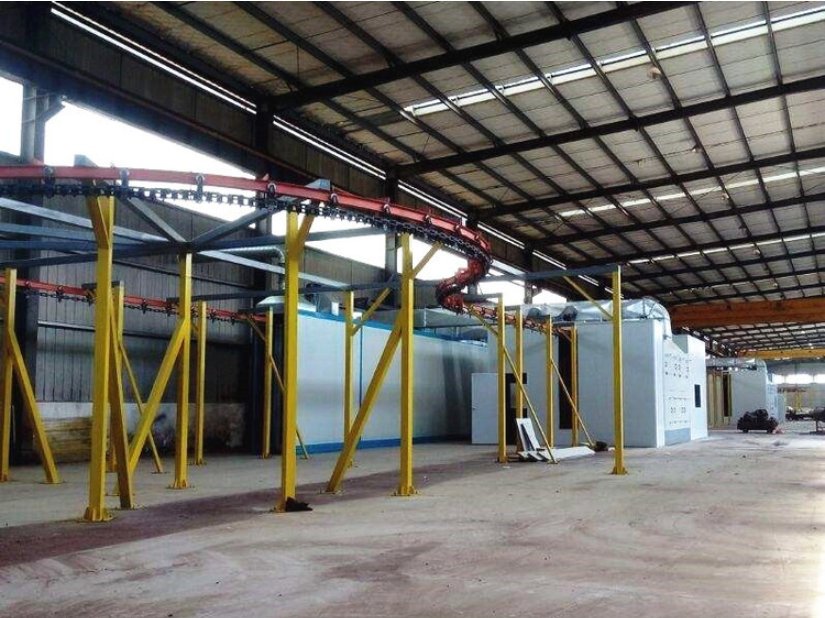
What are the dust removal equipment for workpiece surface before electrostatic spraying?
What are the dust removal equipment for workpiece surface before electrostatic spraying?
Dust removal from the surface of a workpiece before **electrostatic spraying** is critical to achieving a high-quality finish. Contaminants such as dust, grease, or oil can cause defects like poor adhesion, uneven coating, or blemishes. Several types of dust removal equipment and methods are used to ensure a clean surface:
—
### **1. Air Blowing Systems**
– **How It Works:**
– Compressed air is blown onto the workpiece surface using air nozzles or blowers to remove loose dust particles.
– **Common Setup:**
– Installed along the assembly line, often in an enclosed chamber to contain displaced dust.
– **Advantages:**
– Simple and cost-effective.
– Suitable for removing loose, non-adherent particles.
– **Limitations:**
– May not remove fine or statically charged dust effectively.
—
### **2. Electrostatic Dust Removal Systems**
– **How It Works:**
– Uses ionized air or brushes to neutralize static charges on the workpiece, allowing dust to be removed easily.
– **Common Setup:**
– Includes static neutralizers (ionizing bars) and suction systems to capture released particles.
– **Advantages:**
– Very effective for removing dust adhered due to static electricity.
– Enhances surface cleanliness for optimal coating adhesion.
– **Limitations:**
– Requires specialized equipment and setup.
—
### **3. Vacuum Dust Removal Systems**
– **How It Works:**
– Vacuum systems with high-efficiency filters are used to suck away loose particles from the surface.
– **Common Setup:**
– Often combined with air blowing or brushing systems for comprehensive cleaning.
– **Advantages:**
– Excellent for capturing fine dust and debris.
– Contains dust, preventing contamination of the surrounding area.
– **Limitations:**
– Requires regular maintenance of filters.
—
### **4. Mechanical Brushing Systems**
– **How It Works:**
– Rotating brushes or rollers with soft bristles clean the workpiece surface.
– **Common Setup:**
– Typically integrated into the conveyor line for continuous operation.
– **Advantages:**
– Effective for removing large particles and light debris.
– **Limitations:**
– May not work well for intricate or complex-shaped parts.
– Requires regular cleaning of brushes.
—
### **5. Washing and Drying Systems**
– **How It Works:**
– The workpiece is washed using cleaning solutions (e.g., water, detergents, or degreasers) and then dried with hot air or infrared systems.
– **Common Setup:**
– Pre-treatment stations before the powder coating line.
– **Advantages:**
– Removes dust, grease, and oil simultaneously.
– Ensures a thoroughly clean surface.
– **Limitations:**
– More complex and time-consuming compared to dry cleaning methods.
—
### **6. Tack Cloths or Sticky Rollers**
– **How It Works:**
– Manually or automatically applied tack cloths or rollers pick up fine dust particles from the surface.
– **Common Setup:**
– Used for smaller-scale operations or as a supplementary cleaning step.
– **Advantages:**
– Effective for fine dust.
– Inexpensive and easy to use.
– **Limitations:**
– Not suitable for high-throughput production lines.
—
### **7. Ultrasonic Cleaning**
– **How It Works:**
– High-frequency sound waves in a liquid medium dislodge dust and contaminants from the surface.
– **Common Setup:**
– Typically used for small or intricate parts requiring thorough cleaning.
– **Advantages:**
– Removes microscopic contaminants and particles.
– **Limitations:**
– Expensive and not suitable for large parts or high-speed production lines.
—
### **8. Combination Systems**
– Many production lines use a combination of these methods to achieve optimal dust removal. For example:
– **Air Blowing + Vacuum Suction:** Removes both loose and fine dust effectively.
– **Washing + Drying + Electrostatic Neutralization:** Cleans and prepares surfaces comprehensively.
—
### **Factors to Consider When Choosing Dust Removal Equipment**
1. **Workpiece Material:** Different materials may require different cleaning techniques (e.g., conductive vs. non-conductive surfaces).
2. **Surface Shape and Size:** Complex geometries may need specialized brushes or ultrasonic cleaning.
3. **Production Speed:** High-speed lines benefit from automated and integrated systems.
4. **Contaminant Type:** Consider whether the dust is loose, adherent, or greasy.
5. **Cost and Maintenance:** Factor in the initial investment and ongoing maintenance of the equipment.
By selecting the right dust removal equipment and integrating it into the electrostatic spraying process, you can ensure clean surfaces and high-quality finishes.

electrostatic powder coating hazards
electrostatic powder coating hs code
electrostatic powder coating las vegas
electrostatic powder coating line factory
electrostatic powder coating machine company
electrostatic powder coating machine hs code
electrostatic powder coating machine manufacturer
electrostatic powder coating machine price
electrostatic powder coating machine products
electrostatic powder coating machine supplier
electrostatic powder coating machine suppliers
